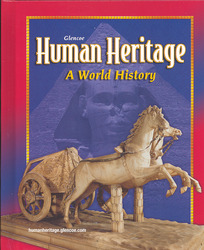Human Heritage: A World HistoryChapter 6:
The Phoenicians and the HebrewsWeb Activity Lesson Plans“Phoenician Ships”Introduction
Students have read about the Phoenician civilization and its widely successful trade practices. In this exercise, students will explore the different types of Phoenician ships and how they were used in different situations. Lesson Description
Students will use information from the Phoenician Ships Web site to learn about different types of Phoenician ships and how they were used. Students will then answer four questions and use their new knowledge of Phoenician ships to design their own. Instruction Objectives
- Students will characterize different types of Phoenician ships.
- Students will apply this knowledge by designing their own ships.
Student Web Activity Answers
- Phoenician ships differed from Egyptian ships in three ways. First, the hulls were shorter than the equivalent Egyptian ships, making them more seaworthy. Second, there was a wicker fence along the sheerstrake to protect the deck cargo in Phoenician ships, unlike Egyptian ships. Third the ships on the tomb of Kenamon did not have a visible hogging truss, which implies that the method of construction was mechanically sounder than that of Egyptian ships.
- The "round boat" was a broad-beamed ship that depended principally on sails rather than the oars and provided a much larger cargo space than narrow galleys.
- The bireme became the leading warship in the 8th century B.C. It had two banks of oars which made it very large.
- The Battle of Salamis, which occurred in 480 B.C., was one of the first great naval battles in recorded history.
- Students' designs will vary.
 | 




